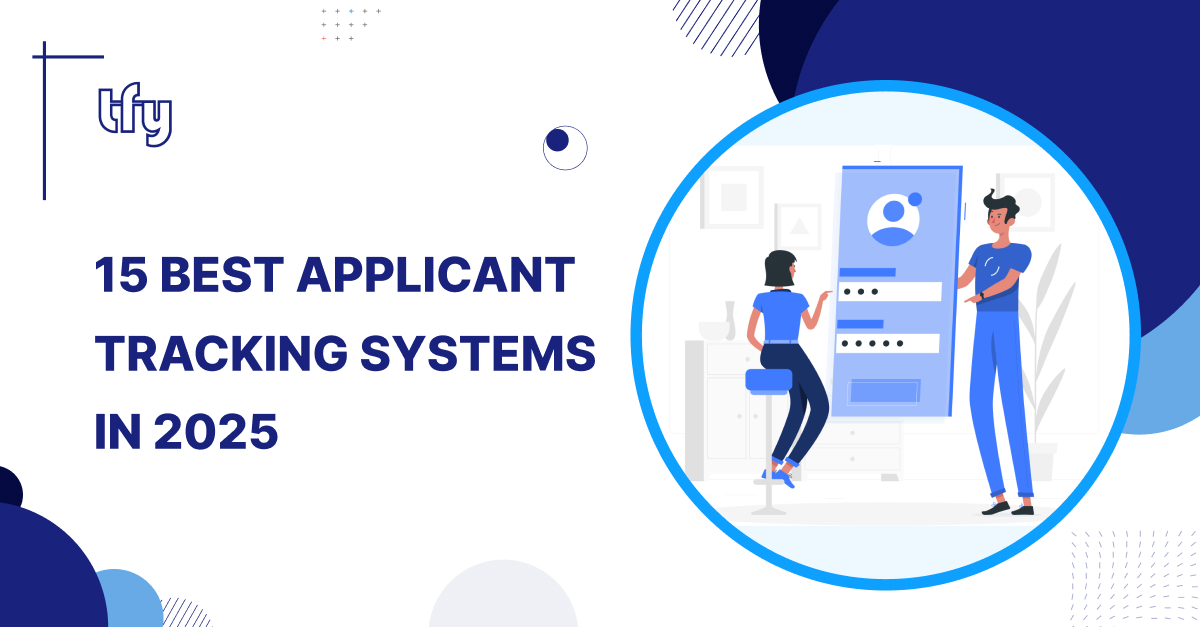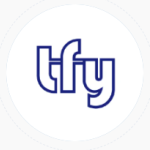
Applicant Tracking Systems (ATS) have become indispensable for modern recruitment teams. In 2025, the hiring landscape is faster, more competitive, and more global than ever. Without the right technology, businesses risk losing top talent to competitors who can move quicker.
An ATS is more than just a digital filing cabinet for resumes—it’s a central command center for sourcing, screening, interviewing, and hiring the right people. The best applicant tracking systems go beyond basic tracking, adding automation, AI insights, and seamless integrations to make recruiting a strategic advantage.
In this guide, we’ll break down the 15 best ATS platforms in 2025, explain what makes them stand out, and help you choose the right one for your business.
1. Transformify (TFY) – Best Applicant Tracking System for Global, AI-Powered Hiring
Key Features
AI-driven candidate sourcing with predictive analytics.
One-click job posting to 100+ global job boards.
Built-in compliance for GDPR and international hiring regulations.
Real-time pay rate insights and candidate success predictions.
Seamless integrations with HR, ERP, and payroll platforms like SAP Fieldglass, Workday, and Xero.
Unique Differentiator
Transformify is built for global-scale recruitment with compliance at its core, making it ideal for companies hiring across multiple countries and jurisdictions.
Ideal Use Case
Best for scaling companies, enterprises, and staffing agencies that hire internationally and want data-driven, compliant recruitment workflows.
Pros
End-to-end recruitment solution with advanced AI insights.
Wide global reach for sourcing candidates.
Strong integration ecosystem.
2. Greenhouse – Best for Structured, Consistent Hiring Workflows
Key Features
Robust interview planning and scorecard system.
Customizable hiring pipelines for different roles.
Strong analytics for diversity hiring and performance tracking.
Integrations with LinkedIn, job boards, and HRIS tools.
Unique Differentiator
Greenhouse’s structured hiring methodology ensures every candidate is assessed consistently, reducing bias and improving quality of hire.
Ideal Use Case
Mid-sized to large companies that value process standardization and data-driven recruitment.
Pros
Excellent for maintaining hiring quality across departments.
Highly customizable workflows.
Supports diversity and inclusion initiatives.
Cons
Can be complex to set up initially.
Higher pricing compared to basic ATS tools.
3. Manatal – Best Budget-Friendly AI Recruitment Tool
Key Features
AI-powered candidate recommendations.
Drag-and-drop recruitment pipelines.
CRM for managing client and candidate relationships.
Custom career page builder with branding options.
Unique Differentiator
Manatal offers AI automation at an accessible price, making it ideal for smaller teams who still want cutting-edge sourcing capabilities.
Ideal Use Case
Small to medium-sized companies or agencies looking for affordable AI recruitment without sacrificing features.
Pros
Affordable compared to similar AI-powered ATS tools.
Easy to set up with minimal training.
Includes CRM functionality for agencies.
Cons
Limited enterprise-level customization.
Some integrations may require additional setup.
4. BambooHR – Best All-in-One HR & ATS Solution for SMBs
Key Features
Built-in applicant tracking with customizable workflows.
Automated communication templates for candidates.
Onboarding tools including e-signatures and document storage.
Mobile-friendly interface for hiring on the go.
Unique Differentiator
BambooHR blends applicant tracking with complete HR management, streamlining the transition from candidate to employee.
Ideal Use Case
Small to medium-sized businesses that want one platform for both recruitment and HR operations.
Pros
Combines recruitment and core HR functions.
Simple, intuitive interface.
Strong onboarding features.
Cons
Not ideal for high-volume recruitment.
Limited job board integrations compared to dedicated ATS platforms.
5. ClearCompany – Best for Aligning Hiring with Long-Term Talent Goals
Key Features
End-to-end hiring workflow from sourcing to onboarding.
One-click background checks.
Talent management tools for performance tracking and engagement.
Customizable application processes for different roles.
Unique Differentiator
ClearCompany connects recruitment with employee lifecycle management, helping businesses align hiring with retention and development strategies.
Ideal Use Case
Organizations that want to integrate hiring with long-term talent planning.
Pros
Easy to use across different departments.
Combines hiring with employee performance management.
Flexible workflows for different industries.
Cons
May be too feature-rich for teams only needing an ATS.
Some reporting features require training to maximize.
6. Workable – Best for Fast, No-Frills Recruiting
Key Features
One-click posting to 200+ job boards.
AI-powered sourcing and candidate matching.
Integrated video interviewing tools.
Automated scheduling and email templates.
Unique Differentiator
Workable is laser-focused on speed and simplicity, making it perfect for companies that want to post, source, and hire quickly without complex onboarding.
Ideal Use Case
Small to mid-sized companies that need a straightforward, recruiter-friendly ATS without extra HR modules.
Pros
Very easy to learn and implement.
Massive job board distribution network.
Great for rapid hiring needs.
Cons
Limited advanced customization.
Not designed for full HR lifecycle management.
7. Pinpoint – Best for In-House Talent Acquisition Teams
Key Features
Multilingual platform with global job posting.
Built-in employee referral system.
Customizable requisition approval workflows.
Onboarding features for smooth candidate transition.
Unique Differentiator
Pinpoint excels at building internal recruitment pipelines, helping companies attract and manage talent without over-reliance on agencies.
Ideal Use Case
Organizations with dedicated in-house recruiters focused on employer branding and internal talent sourcing.
Pros
Great for managing direct sourcing strategies.
Supports multilingual recruiting.
Easy integration with referral programs.
Cons
Less suitable for staffing agencies.
May require some customization for niche industries.
8. iCIMS – Best for Enterprise-Scale, High-Volume Hiring
Key Features
AI-powered resume screening and matching.
Predictive analytics for candidate success.
Configurable workflows for different departments.
Deep integrations with job boards, HRIS, and CRM systems.
Unique Differentiator
iCIMS is designed for large enterprises managing thousands of applications, offering scalability without compromising compliance or performance.
Ideal Use Case
Corporations and global companies with complex, multi-location hiring needs.
Pros
Enterprise-grade performance and security.
Extensive integration ecosystem.
Robust reporting and analytics.
Cons
Higher cost compared to SMB-focused tools.
Longer implementation timelines.
9. Lever – Best ATS + CRM Hybrid for Small Teams
Key Features
Built-in candidate relationship management (CRM).
Pipeline visualization with customizable stages.
Automated outreach and follow-ups.
Mobile-optimized job boards and applications.
Unique Differentiator
Lever combines ATS efficiency with CRM relationship-building, making it perfect for recruiters who need to nurture talent pipelines over time.
Ideal Use Case
Small to mid-sized businesses and agencies looking for an integrated ATS and CRM without juggling multiple tools.
Pros
Clean, intuitive interface.
Strong focus on relationship-based recruiting.
Great for long-term talent nurturing.
Cons
Limited advanced automation compared to larger ATS.
May not suit high-volume hiring environments.
10. JazzHR – Best Budget-Friendly ATS for SMBs
Key Features
Unlimited job postings without extra fees.
Customizable recruitment workflows.
Employee referral program tools.
Calendar integrations for seamless interview scheduling.
Unique Differentiator
JazzHR is a cost-effective recruitment solution that doesn’t compromise on core ATS features, perfect for SMBs working with tight budgets.
Ideal Use Case
Small and growing businesses that need a reliable, affordable ATS to manage hiring efficiently.
Pros
Very affordable pricing plans.
Easy to set up and use.
Scalable as the company grows.
Cons
Fewer integrations than enterprise-level ATS tools.
Lacks advanced AI-powered sourcing capabilities.
11. Breezy HR – Best for Collaborative, Team-Driven Hiring
Key Features
Job posting to 50+ boards with one click.
Automated interview scheduling and reminders.
Built-in diversity recruiting tools.
Career site builder with custom branding.
Mobile app for recruiters on the go.
Unique Differentiator
Breezy HR is built for collaboration and transparency, making it easy for hiring managers, recruiters, and interviewers to work together on a single platform.
Ideal Use Case
Mid-sized or scaling companies that want a collaborative ATS with strong automation features and mobile accessibility.
Pros
Intuitive drag-and-drop pipeline management.
Supports DEI-focused recruiting initiatives.
Strong mobile functionality for busy hiring teams.
Cons
May lack the depth of analytics found in enterprise ATS.
Slight learning curve for advanced features.
12. Avature – Best for Customizable, Enterprise Recruiting
Key Features
ATS + CRM in one platform.
AI-powered talent matching and recommendations.
Video interviewing and onboarding tools.
Contingent workforce management.
Event recruiting capabilities for job fairs and campus hiring.
Unique Differentiator
Avature stands out with extreme customization, making it ideal for enterprises with complex, global hiring workflows that can’t be served by off-the-shelf ATS tools.
Ideal Use Case
Large multinational corporations and organizations that require bespoke recruitment processes across multiple geographies.
Pros
Highly flexible and configurable.
Comprehensive talent management beyond hiring.
Excellent for global, multi-brand organizations.
Cons
Steeper learning curve due to customization depth.
Premium pricing.
13. Jobvite – Best for Full Talent Acquisition Lifecycle
Key Features
AI search and candidate ranking.
Onboarding, chatbots, and video interview capabilities.
Smart Scheduler for interview coordination.
Analytics dashboard for recruitment KPIs.
Unique Differentiator
Jobvite offers a complete talent acquisition suite, combining sourcing, recruiting, onboarding, and engagement into one platform.
Ideal Use Case
Medium to large businesses that want one vendor for the entire recruitment process.
Pros
Wide range of recruitment tools in one ecosystem.
Good AI capabilities for candidate discovery.
Flexible integrations with existing HR systems.
Cons
Some features may feel redundant for smaller teams.
Requires onboarding time to use full functionality.
14. SmartRecruiters – Best for Broad Talent Pool Access
Key Features
Discovery feature to uncover hidden talent.
Job board and social media cross-posting.
In-browser collaboration and communication tools.
Marketplace of over 600 recruitment apps and services.
Unique Differentiator
SmartRecruiters integrates a recruitment marketplace, enabling users to connect with third-party services directly within the ATS.
Ideal Use Case
Large companies or high-growth firms that want maximum reach and easy access to specialized recruitment tools.
Pros
Extensive marketplace for plug-and-play features.
Excellent sourcing capabilities.
Streamlined, modern interface.
Cons
Can be pricey for small organizations.
May include more features than smaller teams need.
15. Trakstar – Best for Mid-Sized Teams with Growth Plans
Key Features
Multi-location job posting.
Resume parsing for automated profile creation.
Performance management and analytics modules.
Integration with other HR tools in the Mitratech suite.
Unique Differentiator
Trakstar combines ATS functionality with performance management tools, supporting hiring and ongoing employee success tracking in one platform.
Ideal Use Case
Mid-sized organizations looking for a scalable ATS that supports both recruitment and workforce development.
Pros
Strong analytics capabilities.
Supports both hiring and talent retention strategies.
Fits well into multi-location recruitment needs.
Cons
Less focus on niche recruiting needs.
UI could feel dated compared to newer ATS solutions.
How to Choose the Best Applicant Tracking System for Your Business
When selecting an ATS, ask yourself:
- What’s my hiring volume? High-volume recruiters need automation-heavy systems like iCIMS or Transformify.
- What’s my team size? Small teams may prefer Workable or JazzHR for simplicity.
- Do I need global compliance? Transformify, Avature, and iCIMS excel here.
- How important is candidate experience? Look at Pinpoint, BambooHR, and Breezy HR.
Future Trends in ATS for 2025 & Beyond
- AI Candidate Matching: More ATS platforms will use AI to recommend top talent faster.
- Diversity Analytics: Built-in DEI metrics to ensure fair hiring practices.
- Deeper Integrations: ATS tools connecting seamlessly with payroll, onboarding, and learning platforms.
- Mobile-First Recruiting: Candidate and recruiter experiences optimized for mobile from start to finish.
Final Thoughts
Choosing the best applicant tracking system is about more than features—it’s about aligning technology with your hiring goals. Whether you’re an SMB looking for simplicity or a global enterprise needing compliance and analytics, the right ATS can become a true recruitment advantage.
Ready to see how Transformify (TFY) can streamline your hiring?
Book a Demo today and discover how AI-powered recruitment can help you hire better, faster, and globally.



